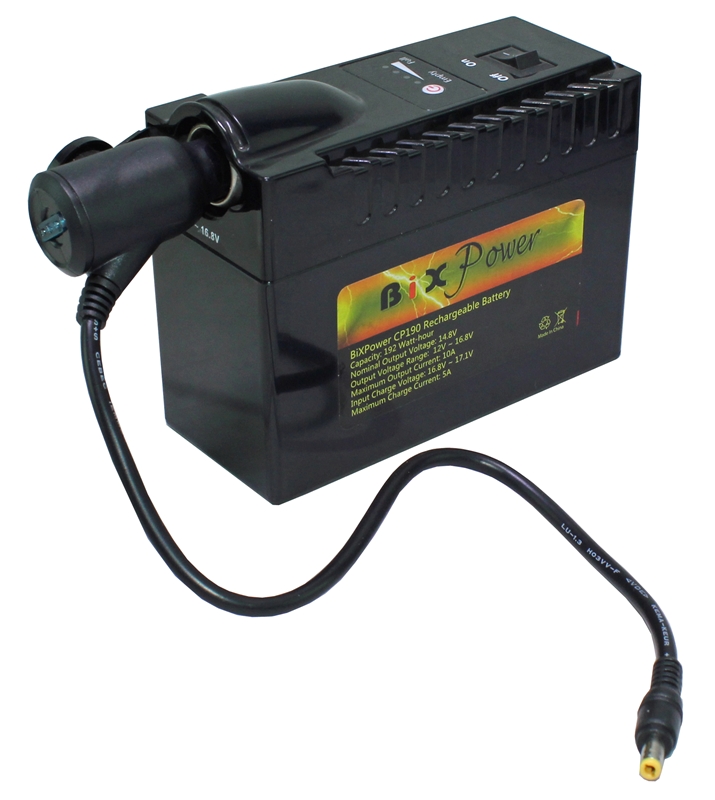Rechargeable Batteries
Rechargeable Batteries

A rechargeable battery is a storage battery that can be discharged and recharged many times. Unlike a primary battery, a rechargeable battery can be reused. A primary battery is charged and used once, and then discarded. Often, a rechargeable battery will last much longer. Here are some examples.
Nickel-cadmium
Nickel-cadmium rechargeable batteries are available in a variety of shapes and sizes. The positive electrode is made of nickel oxide, while the negative electrode is made of cadmium. These batteries are rated to last for 500 cycles. The negative electrode contains pure cadmium.
Unlike lead-acid batteries, nickel-cadmium rechargeable batteries do not require a KOH electrolyte to function. As a result, they are self-discharged at a very fast rate if they are left on an open circuit. For every 10 degree Celsius increase in temperature, this rate of discharge increases by 1%.
Nickel-cadmium batteries use a chemical reaction that produces a DC voltage source. The two ports are located on the top of a steel battery box. The cadmium layer is held above the separator layer. This creates a space in the cell where excess electrolyte can escape.
Nickel-cadmium rechargeable battery is a common type of battery used in electronic equipment. This type of battery is also found in emergency medical equipment and biomedical equipment. However, they have limited life spans compared to other types of batteries. They can lose as much as 5 percent of their charge within a month of usage. In addition, their disposal is problematic due to the presence of cadmium.
A nickel-cadmium battery can be recharged at home or on the go. It contains nickel oxy-hydroxide in the anode, and cadmium in the cathode. They also contain potassium hydroxide as an electrolyte. This creates a positive and negative electrical charge between the two. Nickel-cadmium rechargeable battery comprises about 8% of the battery market and is popular in many industries.
The nickel-cadmium battery was invented in 1899 by Waldemar Jungner. Lead-acid batteries were the rechargeable battery only rechargeable power in use at the time, and Jungner recognized the potential for a new type of battery. However, it was expensive to produce and development was slow. A sealed nickel-cadmium battery was finally produced in 1947.
Although this type of rechargeable battery offers a higher level of power than its lithium-ion counterpart, it is harder to charge. The voltage of a nickel-cadmium battery is near-constant, which makes it difficult to notice when a battery is getting low.
Lithium-ion
If you have ever wondered what makes a lithium-ion rechargeable battery work, the answer is simple: lithium ions move from one electrode to the other during the charging and discharge processes. When the battery is discharged, the lithium ions move to the positive electrode. When the battery is charged, they move back to the negative electrode.
A lithium-ion battery is a highly efficient power source. It has a much lower self-discharge rate than its nickel-cadmium counterpart and is therefore suitable for high-power applications. The high-voltage cells of a Li-ion battery also allow the battery pack to be made with just one cell, compared to three cells connected in series.
Lithium-ion rechargeable batteries are made of four components: a cathode, anode, separator, and electrolyte. The anode is usually graphite, while the cathode may be made of lithium iron phosphate, lithium cobalt oxide, or lithium manganode oxide. Each component has its own role in the functioning of the battery.
The most common type of lithium-ion rechargeable battery uses lithium cobalt oxide rechargeable battery as an anode. Lithium-ion batteries also use lithium manganese oxide in hybrid electric vehicles and lithium iron phosphate in hybrid electric vehicles. Their electrodes and electrolytes are made of different materials, but the most common is lithium cobalt oxide.
Lithium-ion rechargeable batteries are highly popular in today’s world, where they’re often found in cell phones, laptops, PDAs, iPods, and more. While lithium-ion batteries are highly efficient, their high-voltage levels make them susceptible to exploding or bursting into flames. As such, there’s a need to use them responsibly.
The main advantages of lithium-ion batteries include their high energy density and longevity. They are also lighter than most other rechargeable batteries. They’re also easier to charge and reuse, and are often more durable than lithium iron phosphate batteries. These batteries also don’t require any priming equipment.
The lithium-ion polymer battery differs from standard lithium-ion batteries in that it uses a dry solid polymer electrolyte instead of a liquid. While the polymer electrolyte can’t conduct electricity, it allows ions to exchange. Because this material is a solid, the polymer electrolyte can be thin and lightweight. In fact, it can be as small as one millimeter thick.
Duracell
The Ion Core technology inside the Duracell rechargeable battery allows you to recharge it hundreds of times and keep it going for a long time. They are guaranteed to hold a charge for a year when not in use and last for 10 years if stored properly. The durable, reusable batteries are available in Double A (AA) and Triple A (AA) sizes and are perfect for baby monitors, flashlights, and other battery-operated toys. They are also available in packs of 4 and are compatible with most NiMH chargers.
The Duracell rechargeable battery can be used in almost any device, including those made by other brands. However, it is recommended that you check the device’s manual to determine whether or not it is compatible with a rechargeable battery. The rechargeable cells are best suited for mid to high-drain devices. The Duracell charger is compatible with other NiMH AA and AAA batteries, but cannot guarantee the quality or safety of other brands.
Duracell has four different battery charger models. Each charger has a different charging time. There is a 15-minute Expert Charger, a 45-minute Advanced Charger, a 1 hour Multi-Charger, and a Value Charger. All four of these chargers are faster than their competitors, which means you can recharge your battery in a shorter time than ever.
